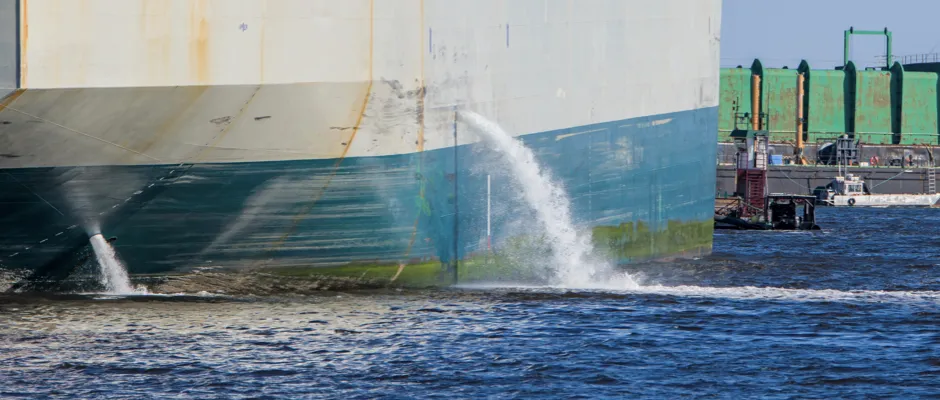USCG vs IMO: Stricter Ballast Water Management Standards
Ballast water, used by ships for stability during their voyages, plays a crucial role in the shipping industry. However, when ballast water is not adequately managed, it can pose a serious threat to marine ecosystems worldwide. Improper management can lead to the spread of invasive species, such as the American comb jelly (Mnemiopsis leidyi), a ctenophore originally from the western Atlantic Ocean, and the Chinese mitten crab (Eriocheir sinensis), which can cause significant ecological and economic damage. Both the International Maritime Organization (IMO) and the United States Coast Guard (USCG) have therefore established stringent regulations to mitigate these risks. This article compares the regulations of the USCG and the IMO, with an emphasis on the stricter requirements of the USCG.
Differences Between USCG and IMO Regulations
Both organizations aim to minimize the environmental impacts of ballast water, but their approaches differ significantly. For example, the IMO Ballast Water Management Convention (BWMC) provides flag states with the flexibility to approve ballast water treatment systems (BWTS) without mandatory independent testing. This means that countries can determine how strictly they evaluate the systems, which can lead to variations in compliance and effectiveness worldwide.
In contrast to the IMO, the USCG imposes stricter requirements on ballast water treatment systems. The USCG, for instance, requires BWTS to undergo rigorous, independent testing conducted in accredited laboratories before they are approved for use. These tests include advanced evaluations of the systems’ effectiveness in killing or removing organisms from ballast water. Additionally, ships entering U.S. waters must undergo additional inspections to ensure that their systems are functioning correctly and meet the USCG’s stringent standards. These extra layers of control and strictness ensure that the protection of vulnerable marine ecosystems is maintained at a higher level.
USCG Compliance Requirements
To ensure environmentally friendly ballast water management, the USCG has implemented additional requirements. Ballast water treatment systems must be thoroughly tested, both onshore in accredited testing facilities and onboard ships under operational conditions. These tests confirm that the systems meet the required water quality standards, such as reducing organisms to a safe threshold level. The results of these tests must be documented and retained for six months. After replacing a ballast water treatment system, the test results must remain accessible for an additional 24 months, ensuring traceability and continuous compliance.
Furthermore, the USCG mandates that ships report their ballast water activities to the National Ballast Information Clearinghouse (NBIC). These reports include details about ballast water storage, treatment, and discharge, enabling the USCG to effectively monitor and enforce regulatory compliance. This comprehensive documentation and monitoring mechanism enhance the reliability of ballast water management and contribute to the protection of marine ecosystems.
Challenges for the Shipping Industry
The stringent USCG regulations present several challenges for the shipping sector. One of the primary challenges is the cost associated with the acquisition, installation, and maintenance of advanced ballast water systems. These investments can be financially burdensome, especially for smaller shipping companies. Additionally, integrating modern treatment systems often requires significant technical modifications to older ships, further increasing technical complexity and costs.
The USCG certification process also poses a challenge. Obtaining approval for ballast water treatment systems is a lengthy and rigorous process that involves extensive documentation and testing. These strict certification requirements can delay the implementation of new systems, requiring shipping companies to allocate more time to comply with regulations. Nevertheless, these measures are essential to ensure the effectiveness and reliability of ballast water management.
Innovations in Ballast Water Management
Technological advancements play a crucial role in helping shipping companies overcome the challenges of ballast water management. Modern ballast water treatment systems, such as UV disinfection and electrochlorination, have proven effective in neutralizing invasive species. While UV disinfection utilizes ultraviolet light to kill organisms in ballast water, electrochlorination applies chlorination techniques to achieve the same objectives. These technologies not only enhance the effectiveness of ballast water treatment but also reduce operational costs by using fewer chemicals and requiring less maintenance.
Key innovations also include automated monitoring and control systems. Real-time monitoring allows shipping companies to continuously track the performance of ballast water treatment systems, enabling swift intervention in the event of any malfunctions or inefficiencies. Additionally, regular maintenance conducted by well-trained crew members ensures the optimal operation and longevity of these systems. Through these technological innovations, shipping companies can not only comply with the stringent USCG regulations but also improve operational efficiency and reduce the ecological impact of their activities.
Future Outlook
With the ongoing growth of international shipping and the increase in global trade activities, it is likely that ballast water regulations will become even more stringent. Innovations in ballast water management continue to provide solutions that reduce the ecological footprint of the shipping sector while facilitating compliance with national and international regulations. Future developments may include more advanced treatment methods and enhanced monitoring technologies that are even more efficient and cost-effective.
Shipping companies that proactively invest in promising technologies contribute not only to complying with USCG and IMO regulations but also to the preservation of marine ecosystems for future generations. By investing in sustainable ballast water treatment solutions, such as UV disinfection or alternative ballast water treatment techniques, companies can improve their operational efficiency, reduce costs, and positively impact the environment.
More Information
Would you like to learn more about the approval requirements for ballast water treatment systems (BWTS) according to USCG standards? Visit the official U.S. Coast Guard page for Ballast Water Management Type Approval to access comprehensive information.



